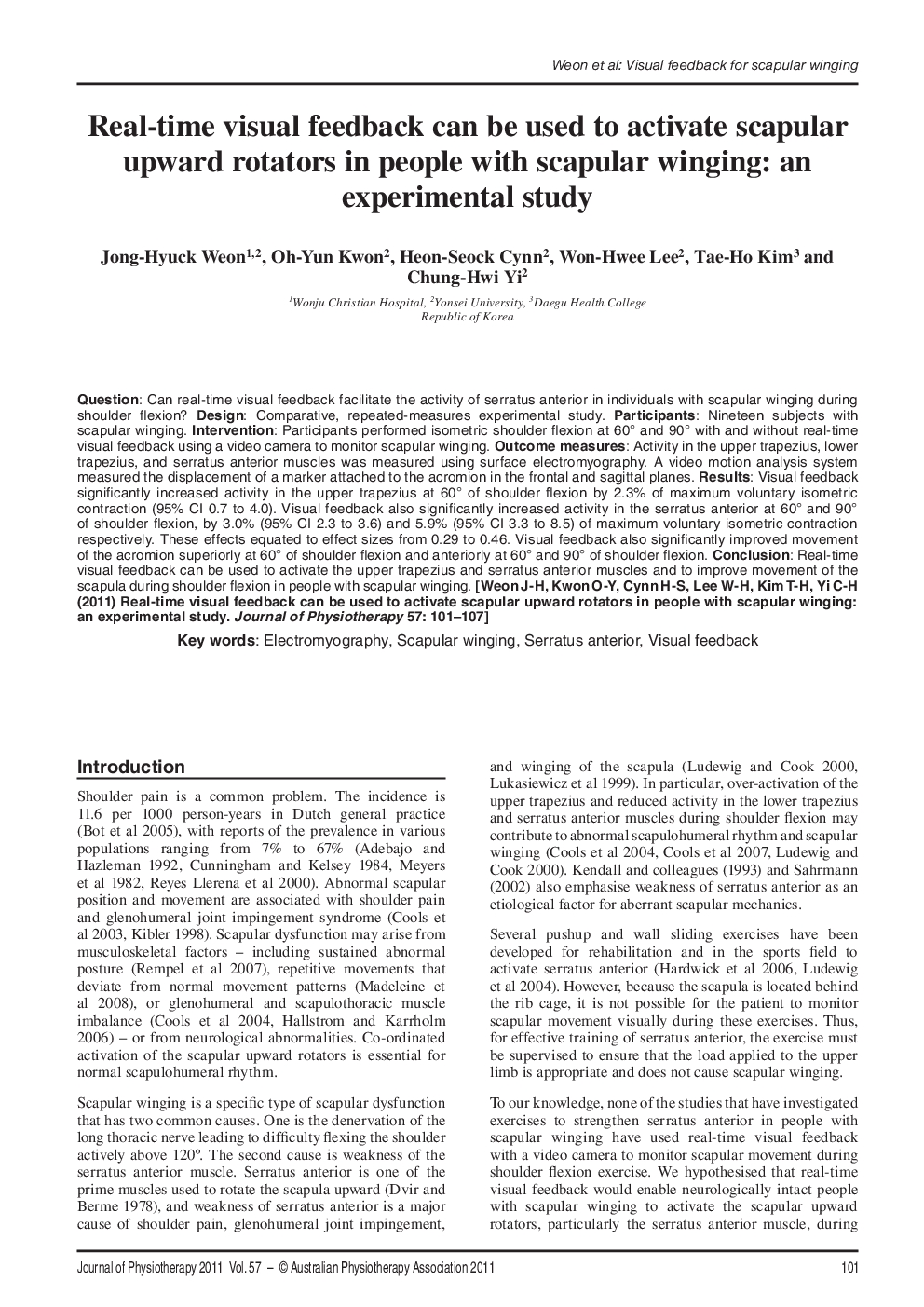| Article ID | Journal | Published Year | Pages | File Type |
|---|---|---|---|---|
| 2621883 | Journal of Physiotherapy | 2011 | 7 Pages |
QuestionCan real-time visual feedback facilitate the activity of serratus anterior in individuals with scapular winging during shoulder flexion?DesignComparative, repeated-measures experimental study.ParticipantsNineteen subjects with scapular winging.InterventionParticipants performed isometric shoulder flexion at 60° and 90° with and without real-time visual feedback using a video camera to monitor scapular winging.Outcome measuresActivity in the upper trapezius, lower trapezius, and serratus anterior muscles was measured using surface electromyography. A video motion analysis system measured the displacement of a marker attached to the acromion in the frontal and sagittal planes.ResultsVisual feedback significantly increased activity in the upper trapezius at 60° of shoulder flexion by 2.3% of maximum voluntary isometric contraction (95% CI 0.7 to 4.0). Visual feedback also significantly increased activity in the serratus anterior at 60° and 90° of shoulder flexion, by 3.0% (95% CI 2.3 to 3.6) and 5.9% (95% CI 3.3 to 8.5) of maximum voluntary isometric contraction respectively. These effects equated to effect sizes from 0.29 to 0.46. Visual feedback also significantly improved movement of the acromion superiorly at 60° of shoulder flexion and anteriorly at 60° and 90° of shoulder flexion.ConclusionReal-time visual feedback can be used to activate the upper trapezius and serratus anterior muscles and to improve movement of the scapula during shoulder flexion in people with scapular winging.
